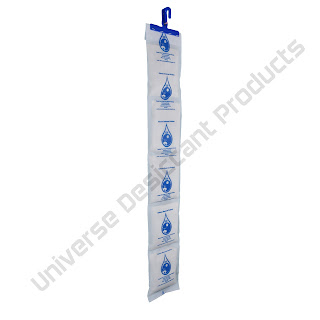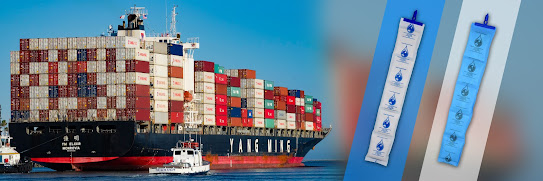Desiccant Packs: Which One to Use
Silica GelSilica gel is the most widely used desiccant. It is a naturally occurring mineral, called silica gel (SiO2). It is processed into granular or beaded form. Silica gel is a solid binder for moisture molecules with an average pore size 24 angstroms. It can absorb moisture up to 220°F (105°C). It will absorb moisture at temperatures above 100 degrees Fahrenheit, but this will cause it to slow down.
Silica gel is most effective at room temperatures and high humidity (60 to 90% RH). It can also drop the relative humidity of a container to about 40% RH. Silica gel is used extensively in pharmaceutical and food applications. It is the FDA's only approved desiccant for direct contact with these products.
Silica gel desiccant is able to absorb water, as well as alcohols, paraffins, and dilefins.
Indicating Silica GelSilica gel can be described as a silica granule or bead that has been washed with cobalt chloride. It has a deep blue color, but turns to purple and pink when it is saturated with moisture. Because of the cobalt chloride, it is not recommended to use indicator silica gel in contact with food and pharmaceutical products Desiccant Manufacturers.
Activated carbon
Activated charcoal, also known as activated carbon, is different than normal charcoal. It has been through an activation process. Also it is free from poisonous fossil fuels. The activation process increases its surface area, which gives it a superior absorbency.
When used in agriculture, activated carbon can absorb poisons and pollutants. It is used for colic, diarrhea and open wounds. It can also be used to treat drug overdoses, gas, diabetes ulcers, heartburns, and indigestion.
Activated carbon has a high absorption capacity and is used as a water and air filter. It can absorb gases and odors such as plastic fumes, cigarettes smoke, glues for furniture, carpet odors and bacteria, and viruses. Activated charcoal can also filter out harmful elements such as chlorine, copper, and carbohydrates.
Molecular Sieve
Molecular sieves, porous synthetic desiccants, have an extremely strong affinity for moisture molecules. The molecular sieve structure has a unique feature that is different from other desiccants. Its uniformity in the crystal lattice structure's pore sizes is what makes it stand out.
The manufacturing process includes controlling the size of the pores on molecular sieve particles. This allows for the selection of products that can absorb water but exclude other molecules such as volatile organics.
Molecular sieve can retain moisture at temperatures above 450°F (230°C). Because of its high affinity to moisture, molecular Sieve is capable of bringing relative humidity in packages to as low as 10% RH.




Comments
Post a Comment